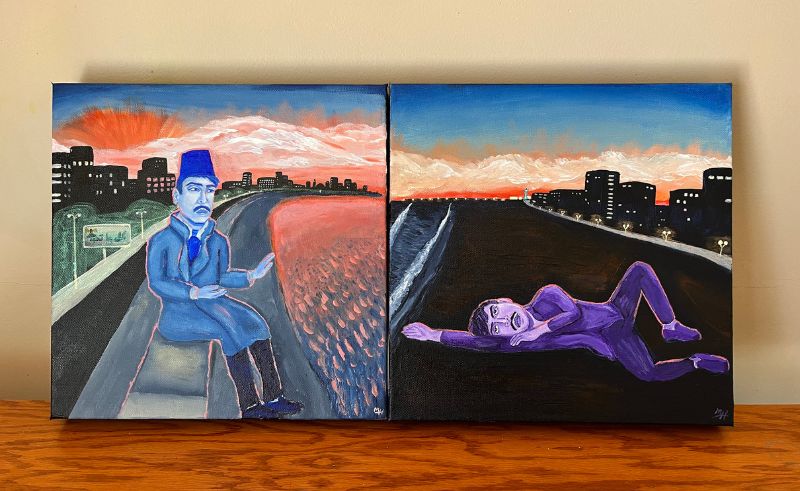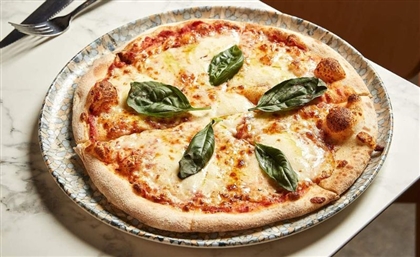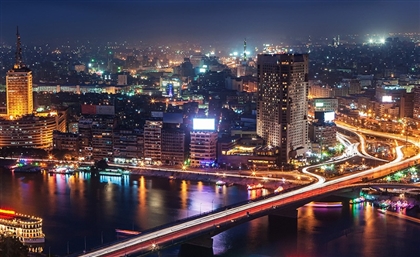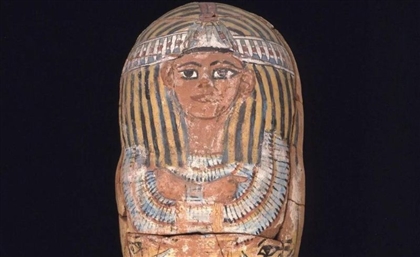A Homecoming: The Paintings of Massoud Hayoun in Words
Massoud Hayoun is a Jewish-Arab writer and painter whose artworks express the lived experience of displacement and return.

During the dreary days of the COVID-19 pandemic, Massoud Hayoun was already the well-renowned author of ‘When We Were Arabs’, a memoir of his grandparents’ exile from their native homelands to the US during waves of Jewish relocation that swept the Arab world in the mid-20th century. By this point in his life Hayoun’s bibliography included a rich variety of novels including ‘Building 46’, a recent release that was set in China - an endeavour that brought him much attention abroad. While working at a dentist’s office, Hayoun received a call from Ai Weiwei, a celebrated Chinese artist, that would set the novelist on a new path of expression through the visual arts.
Ai Weiwei contacted Hayoun to congratulate him on the reception of ‘Building 46’, and offered to write the blurb for the novel. “Suddenly, I was talking to the king of subversion in art,” Hayoun tells CairoScene. Touched by this newfound connection, Hayoun decided to try his hand at an unfamiliar art form, and since then his terrific oeuvre has become a source of inspiration as well as adoration beyond those initially drawn to his moving prose.-45dcd7ef-d4b7-4943-bd54-e325b141d741.jpg) “Anyone can appreciate a painting. You don’t need any sort of education, you don’t even need to be literate,” Hayoun says. “You just need to have feelings and to have had experiences for what I do to hopefully resonate with you.”
“Anyone can appreciate a painting. You don’t need any sort of education, you don’t even need to be literate,” Hayoun says. “You just need to have feelings and to have had experiences for what I do to hopefully resonate with you.”
At 35 years old, painting became a refreshing dimension for the artist’s storytelling, a “conduit for voices” that could not be expressed through prose or verse, and a rebirth of life for the artist himself as well as for Daida and Oscar, his grandparents who are the constant subjects of his works. In his opinion, painting is a less solitary pursuit than the writing of books. For him the process of painting is jovial and light, notwithstanding the often serious, bloody and intense subjects of his work. While painting, Hayoun dances and eats, and immerses himself in the remembrance of those he loves.
Published in 2019, ‘When We Were Arabs’ recounts the life stories, aspirations and personalities of his grandparents Daida and Oscar. From Tunis and Alexandria respectively, they left the Arab world amid the increasing pressure on the region’s Jewish community in the 1950s and 1960s. They are the central characters of Hayoun’s paintings, always appearing and ever present. In Paris, Daida dons the masculine Tunisian chechia, while smoking cigarettes and hollowing out peppers - an ode to the relaxed non-conformism of Arab women in a patriarchal society. On American subways in the modern day, Oscar waits for coming trains with the tarboush still crowning his head, decades after his native land let go of the tradition. For Hayoun, portraying them in this way is a mode for the artist to allow the world to enjoy the personal relationship he enjoyed with them, and, perhaps to remind viewers of the warm relationships they themselves had previously experienced.-a7b48763-b856-4003-a7c4-b79eff976165.jpg) “I feel myself to have already bypassed the outdated and obnoxious gawking at the fact that Jewish Arabs exist,” Hayoun says. “Now, I exist as a person of Arab origin living in the so-called West, devoting what I do to the places my family comes from and the living people who recall them to me.”
“I feel myself to have already bypassed the outdated and obnoxious gawking at the fact that Jewish Arabs exist,” Hayoun says. “Now, I exist as a person of Arab origin living in the so-called West, devoting what I do to the places my family comes from and the living people who recall them to me.”
Through the various characters depicted in his paintings, Hayoun creates a community of lovers, of poets, of dancers, of people of flesh and blood of course, but also of histories, tragedies and generational interludes which created the contemporary. “I want you to see your own loved ones in them,” Hayoun says. “I want you to see that if these paintings mean something to you, you are part of our gigantic family. You are part of an army combating the loneliness of these times of freeze-dried feelings and emotions being reduced to emojis.”
In taking viewers of his art on a visual journey of the personal histories of his grandparents, who he describes as ordinary individuals living in Egypt, Hayoun is not so much commenting on the immense and unique legacy of Jewish Arabness. Rather, his oeuvre is an attempt to express the eternality of the human condition. “The experiences I describe in many of the paintings are Arab but also universal. They are experiences of joy and happiness and indignation and sorrow and re-emergence.”-d6b41432-4df4-49b8-a925-5360fa573ef8.jpg) The artist creates a collective of connoisseurs of the human experience, engulfing them in rich and fiery reds of harissa and the tarboush, the loud blues of Tunis’s medina’s doorways, and the pale blue dawn of the Cairo sky. As for Daida and Oscar themselves, they are always blue, “the colour of ghosts'', a reminder that these two watchful figures have departed this realm. A curator once posited that perhaps Hayoun’s colours are so loud due to his ethnicity. In response to this Hayoun says, “Perhaps he is right. Oscar and Daida were loud, almost caricatures of how the West often views Arabs. The colours might come from how they lived their lives.” He notes however that a huge inspiration for him was in fact the muted colours of celebrated Egyptian painter Seif Wanly.
The artist creates a collective of connoisseurs of the human experience, engulfing them in rich and fiery reds of harissa and the tarboush, the loud blues of Tunis’s medina’s doorways, and the pale blue dawn of the Cairo sky. As for Daida and Oscar themselves, they are always blue, “the colour of ghosts'', a reminder that these two watchful figures have departed this realm. A curator once posited that perhaps Hayoun’s colours are so loud due to his ethnicity. In response to this Hayoun says, “Perhaps he is right. Oscar and Daida were loud, almost caricatures of how the West often views Arabs. The colours might come from how they lived their lives.” He notes however that a huge inspiration for him was in fact the muted colours of celebrated Egyptian painter Seif Wanly.
When asked to whom his art is dedicated Hayoun answers, “The art is first and foremost for the people from my grandparents’ homelands of Egypt, Tunisia and Morocco, and for all Arabs.” The paintings have become a homecoming for Hayoun and for his grandparents, and link the artist with the world and peoples from which fate and history sought to tear him away.
Trending This Week
-
May 01, 2024
























